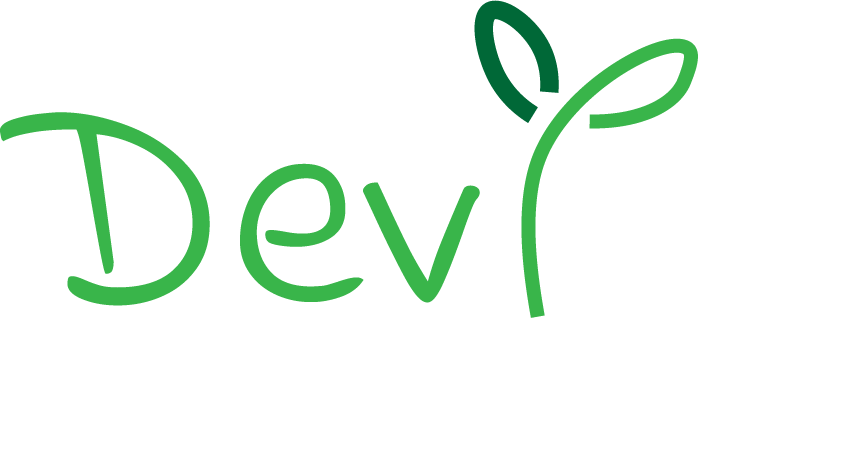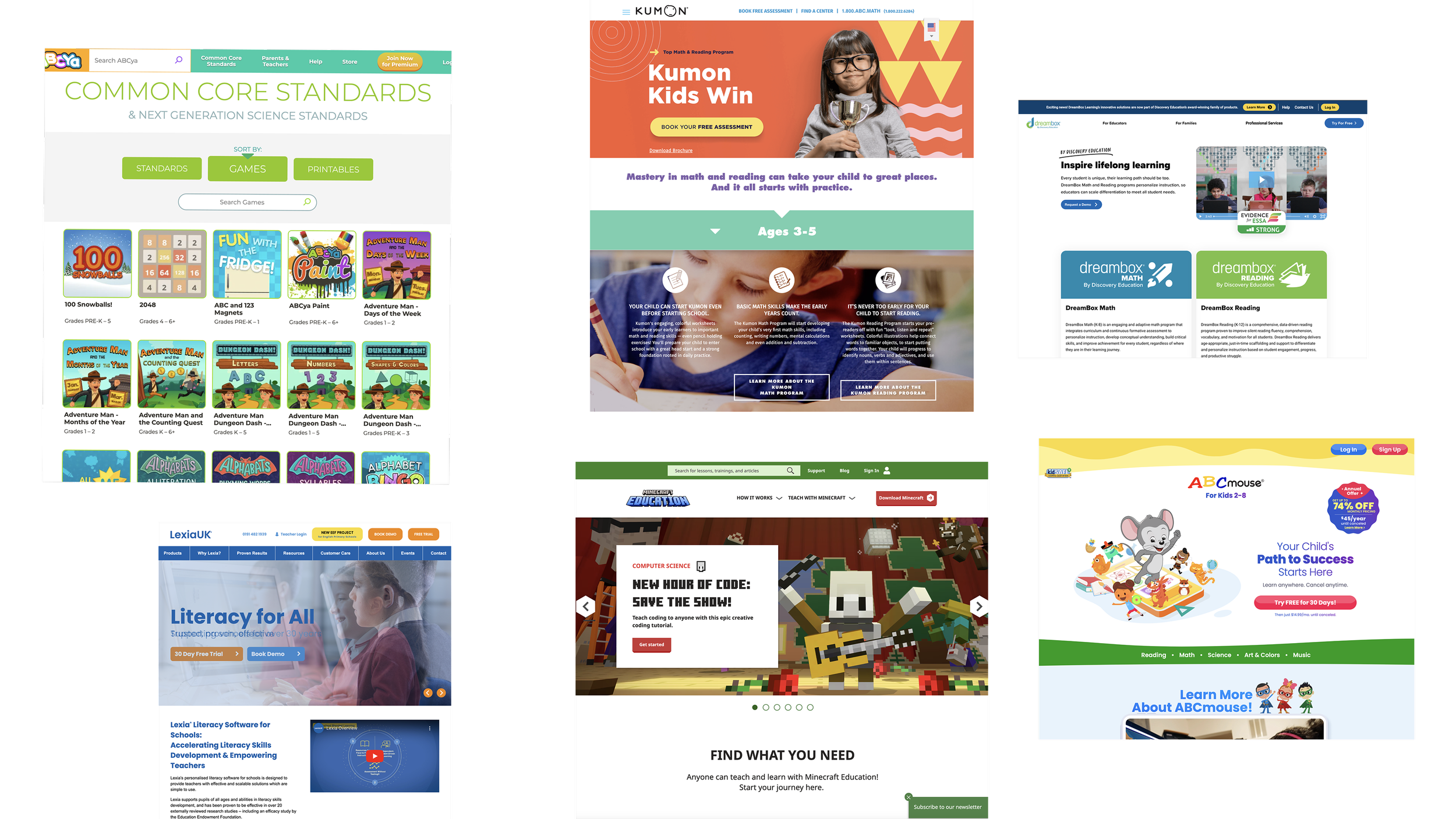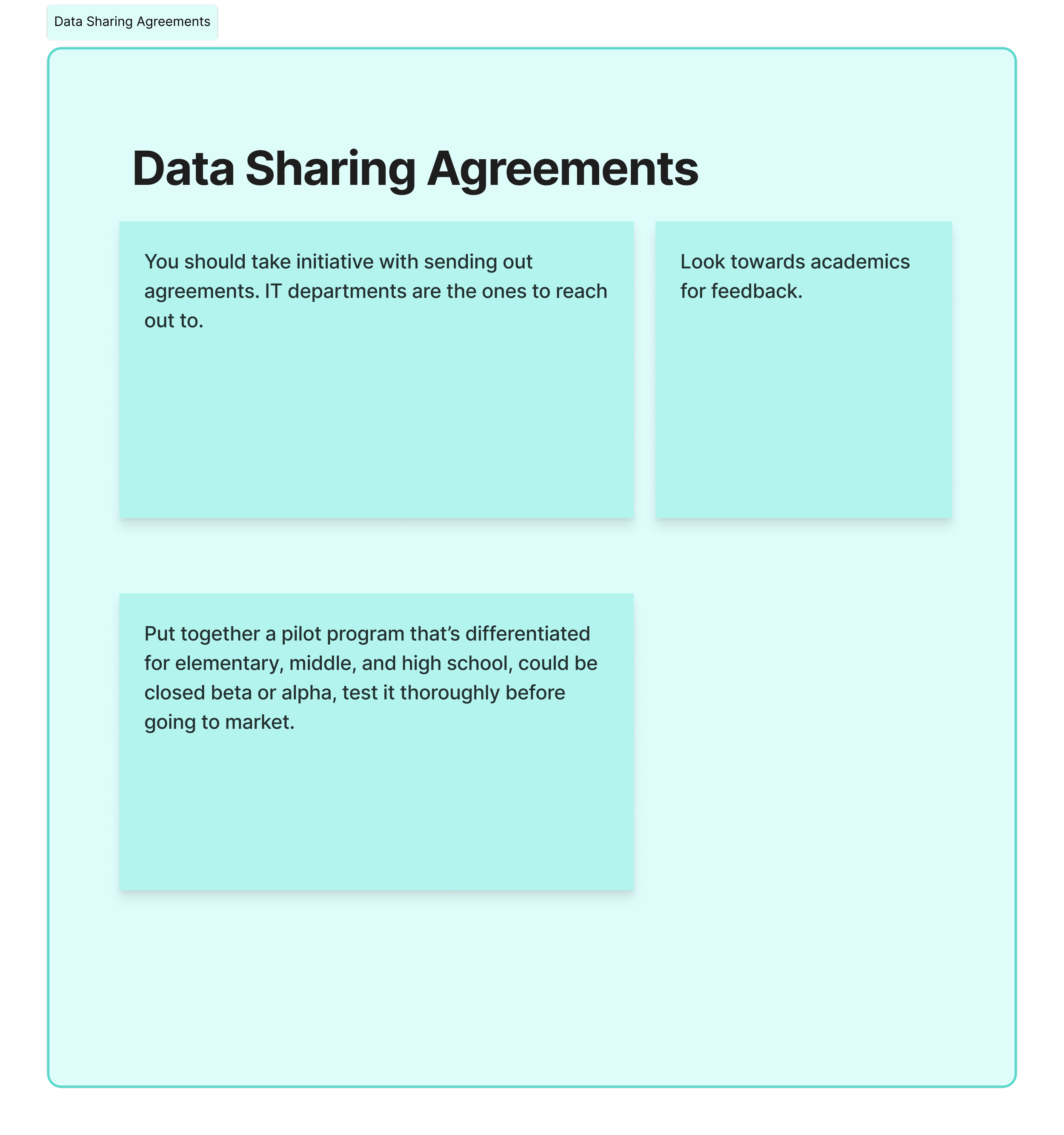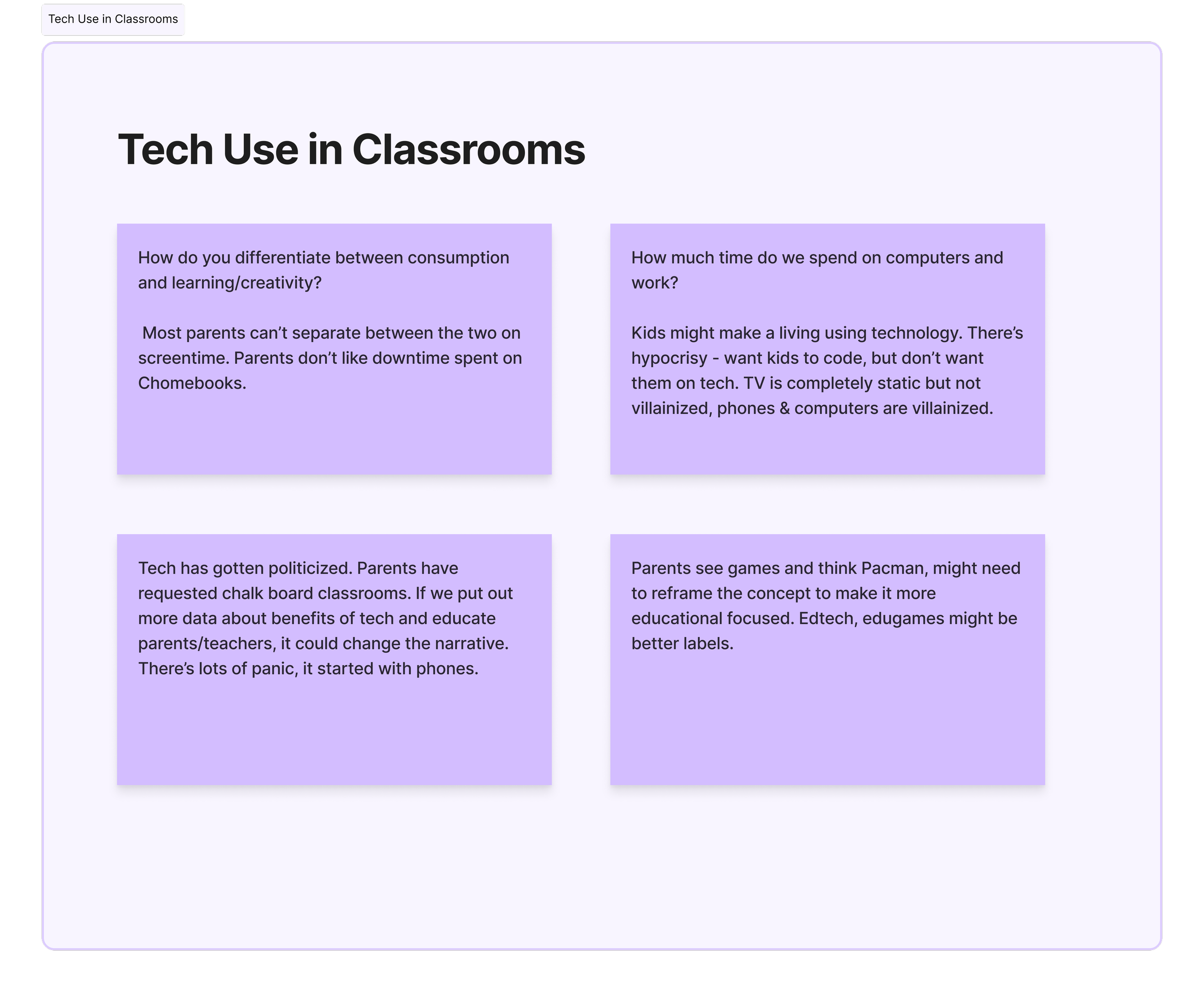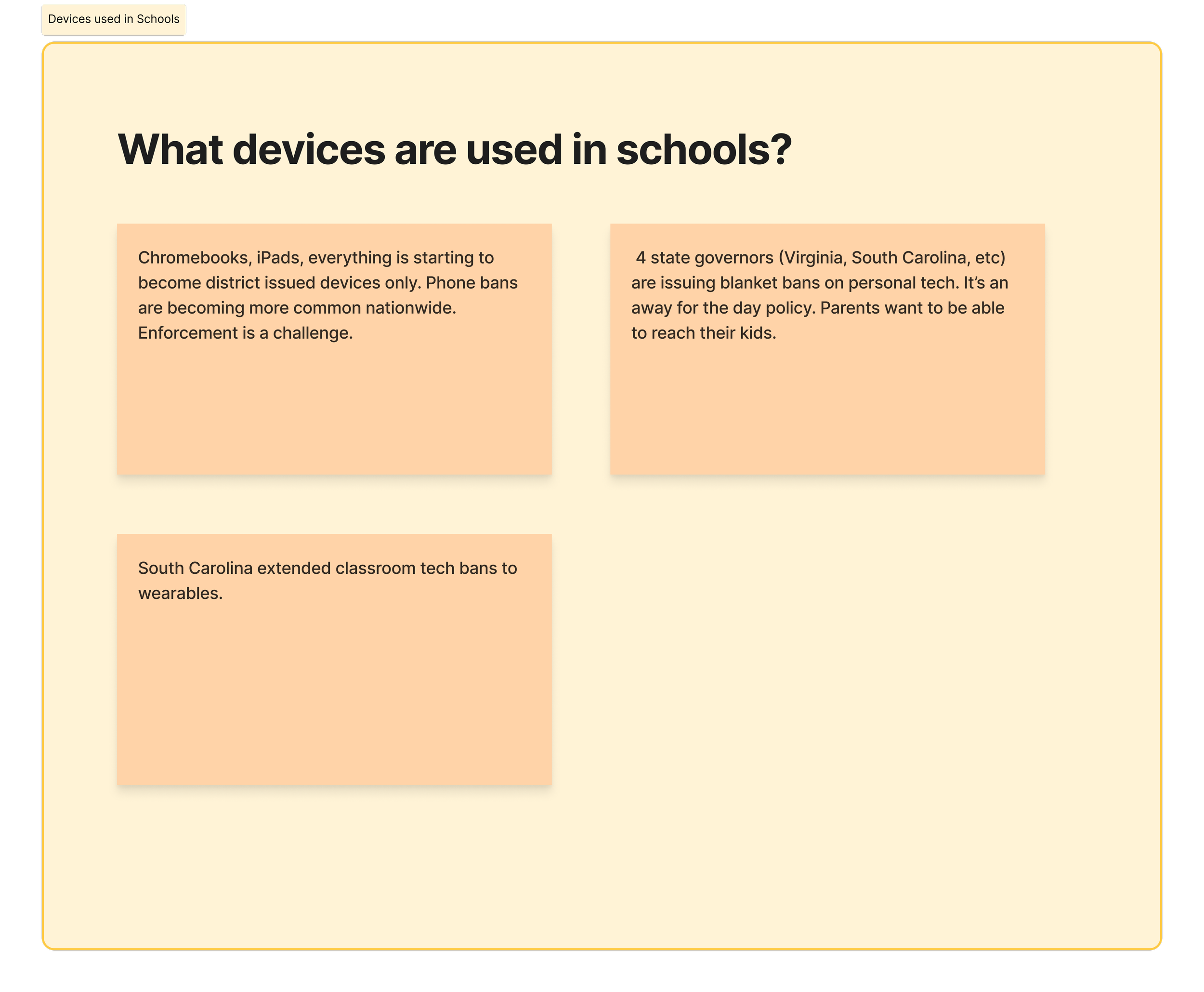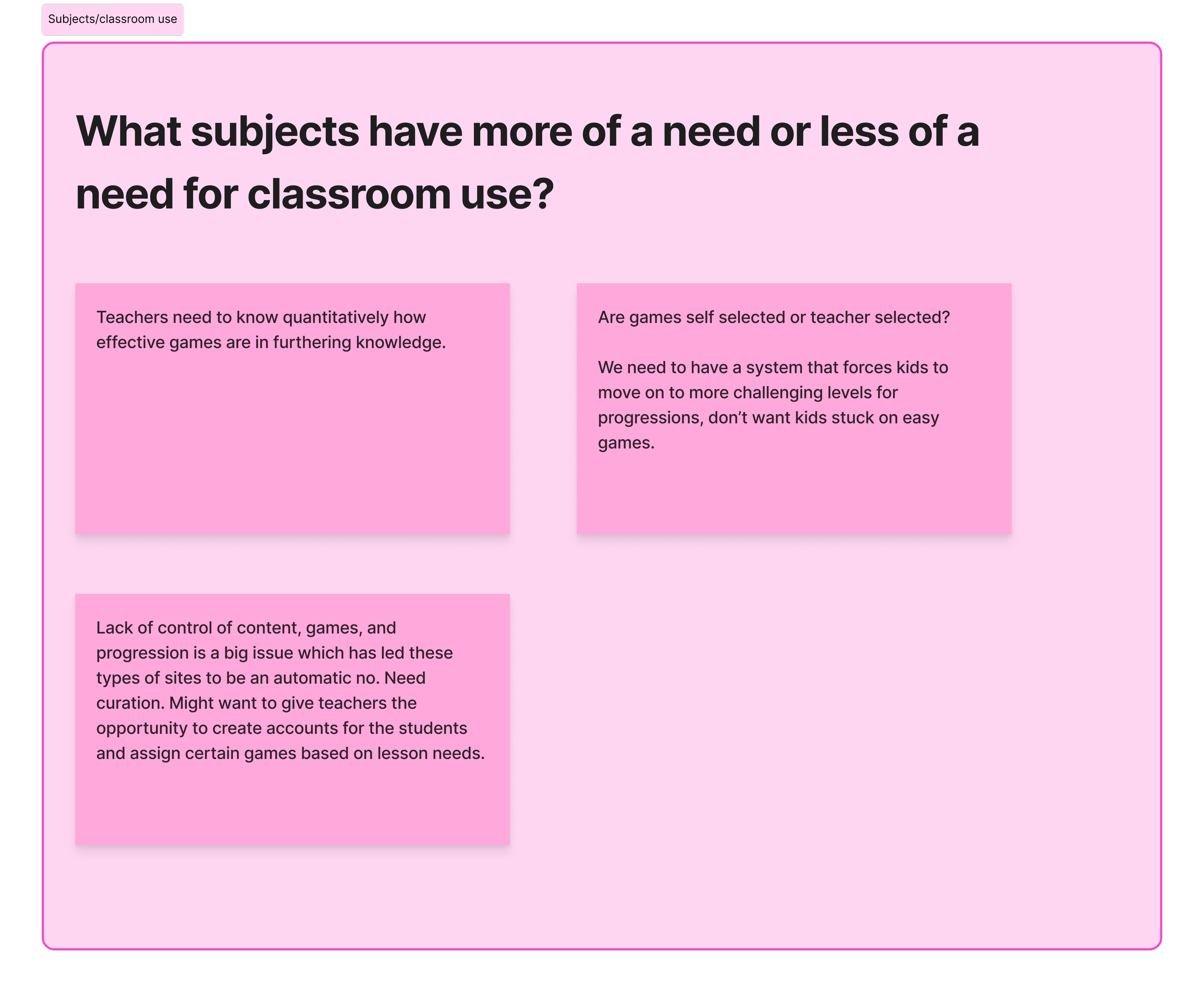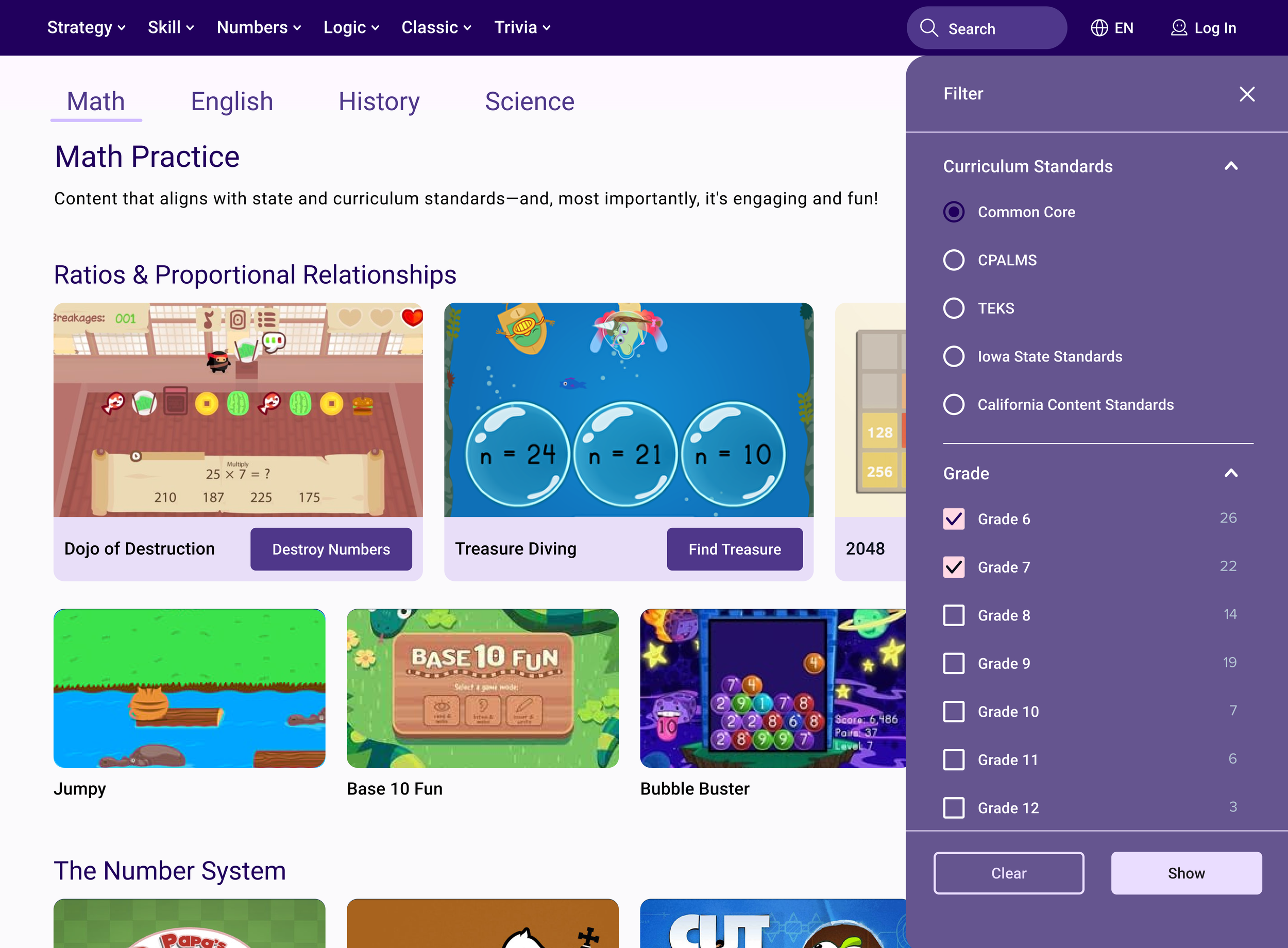An educational gaming platform designed to reach millions of students and create a new revenue stream.
Turning a gaming platform into an educational tool
I led the design of an educational version of a gaming platform to get around school restrictions. The company had no UX processes, no clear strategy, and a tiny research budget, so I used Design Thinking—leaning on user research and digital ethnography to drive an iterative, feedback-focused approach. Over approximately 4 months, I took the project from concept to high-fidelity prototype, handling research, brainstorming, prototyping, testing, and stakeholder presentations while collaborating with product and marketing teams. I wore a lot of hats—UX design, research, leadership, and strategy.
Company details are omitted due to confidentiality. Visuals/details may be altered due to NDA. This study focuses on the process and outcomes.
The Design Thinking Process
Audience Segments
Understanding the target audience segments and their pain points.
Educators
There were a lot of complaints that the site wasn’t educational or productive for learning, and that the ads were inappropriate. A minority of teachers used the educational games on the site in the classroom. They wished the site had more educational resources, aka more educational games.
Their reactions to the site were particularly important because they have the ability to block the site in the classroom.
Parents
Parents largely shared the same point of view as the educators. They were also concerned about the safety/privacy of the site and wished the games on the site were more educational.
Students
They seemed largely satisfied with the site. They liked the games on the site, and the site itself was seen as a meme. Pain points were the ads/lagginess.
If we replaced the content on the current gaming site with educational games, this would alienate the student audience.
“How can we enhance the experience for educators and parents while retaining student appeal?”
I collaborated with the marketing team to come up with a way to answer this question and meet business goals.
Our solution: A subscription-based model of an educational version of the gaming platform to be used in the classroom. Games will be categorized by subject and grade level so users can refine by curriculum throughout the site.
User and Market Research
I conducted ongoing teacher interviews, analyzed surveys, and performed market research to understand the educator audience segment and the edtech landscape.
Gaming in The Classroom
I analyzed survey results to explore how teachers use games in the classroom on a broader scale. Specifically, how 3,000 teachers across the US use games in the classroom. The surveys were targeted towards K-12 public school teachers in all school subjects.
Competitor Analysis
To get a solid understanding of the ed-tech landscape, I ran an ongoing competitor analysis of leading platforms in the industry.
A few patterns stood out:
Curriculum & Subject Focus – Most platforms made it super clear what subjects they covered and how their content fit into learning goals.
Lesson Plans & Educator Resources – A lot of them had ready-made lesson plans and teaching guides, making it easier for teachers to integrate their tools into the classroom.
Trust & Safety – Almost every site had extensive privacy and safety messaging, plus testimonials to build credibility with parents and educators.
Learning Opportunity
I introduced qualitative research to the company, as they primarily relied on quantitative research. I shared the qualitative research I conducted with cross-functional teams. This helped educate team members on the value of qualitative research.
Conversations with Teachers
I conducted informal interviews with public school teachers to understand their usage of games in the classroom and their perceptions on the current gaming platform. Interviews were ad-hoc, happening throughout the project via phone and Google Meet. I recruited participants through my network and social media (LinkedIn, Facebook Messenger). Interviews were ongoing, meaning that they were done through the duration of the project to keep a user-centered perspective. Interviews were unscripted, though there were talking points prepared if conversations veered off topic.
Digital Ethnography
I analyzed discussions on TikTok, Common Sense Media, and Reddit to see how educators percieve the current gaming platform, and how they use games in the classroom. Results of digital ethnography closely aligned with interview results.
Teachers frequently used games in the classroom, but primarily platforms like Kahoot.
The current gaming platform had a mixed reputation—most teachers disliked it because students used it to slack off, while some allowed it during breaks.
A smaller group integrated educational games from the platform into their lessons.
Prototype
Brainstorming with cross-functional teams and building early versions.
Content-first Prototype
Through remote brainstorming with product and marketing teams, I developed low-fidelity prototypes grounded in user and market research. The prototypes focus on content structure, organization, and feasibility within the business model, featuring educational games, a subject-based navigation bar, and lesson-plan promotions.
Audience Feedback
I presented the prototypes and research findings at the Education Research and Development Institute Conference to education superintendents nationwide.
Education Research and Development Institute Conference
Feedback from Superintendents
Presenting the Feedback
ChatGPT and Google Gemini assisted me in polishing my research findings so it would be ready to present to the superintendents. The purpose of the presentation was to show the ideas and initial research to the education superintendents and use their feedback to refine the product vision.
Social Media Manager, Marketing Team
“Devi made significant contributions to the panel our team attended as a leading presenter. She did an excellent job of walking educators through our new product prototype while contextualizing key details with relevant research. She facilitated valuable discussions during the feedback stage, offering our team actionable insights to refine the product and guide its direction moving forward.”
Senior SEO Specialist, Marketing Team
“Devi represented the brand exceptionally well at the Education Research and Development Conference, where she presented her findings in a clear and engaging way.”
Integrating Feedback
Notable feedback from superintendents were that the most important subjects were math and literacy. The grades that would benefit the most from an educational gaming tool were grades 6-12. The superintendents also emphasized the need for the platform to adhere to curriculum standards.
Common Core was the most widely used curriculum standard across the US. States had different standards, including TEKs and CPALMs.
I created a spreadsheet of the nationwide curriculum standards for grades 6-12 (with the help of ChatGPT and Google Gemini). The spreadsheet was handed off to the Product team to choose curriculum-friendly games.
Outcome
High Fidelity Prototype and what we achieved.
Where the Project Stands
Launching in 2025-2026, this educational gaming platform is set to open up a whole new revenue stream while meeting the needs of a key audience: educators.
A school-friendly version will roll out to get around existing content restrictions, making the platform accessible in thousands of previously blocked schools.
I added educational content, focusing on grades 6–12 and core subjects like Math and English based on the insights from superintendents and teachers. Content was broken out by subject and grades so educators could easily recommend games for their students to play. The UI Designer created the visual layout and color scheme of the prototype.
Educators are eager to be able to filter and select games based on curriculum, which I ensured relevance by studying key standards. By studying key standards such as CPALMs, TEKS, and Common Core, I ensured content relevance. I also added content to the nav bars, the titles, and the captions.
The Product team is carrying out the initiative by adding games that adhere to curriculum standards, with a focus on grades 6-12. Expected results are increased trust with parents/educators, and the gaming platform no longer being blocked in schools.
Lessons Learned
During onboarding, I casually mentioned an observation from audience research- that educators had issues with the site. Less than six months later, I was leading an initiative that became a major initiative this year, presenting to stakeholders, and amazed by how I got there. This sparked my passion for strategic problem-solving. Turns out I'm pretty good at it too. Most importantly, it made me realize how much I enjoy working on impactful, high-level projects—especially in making education more inclusive on a large scale.
Future Plans
To take this project further, I would explore the audience segments of neurodivergent students & homeschoolers in-depth and identify ways to make the product more inclusive for those groups. I'd also conduct more refined user research using Dovetail.
I would explore ways to turn this educational gaming experience into an AR/VR simulation.
